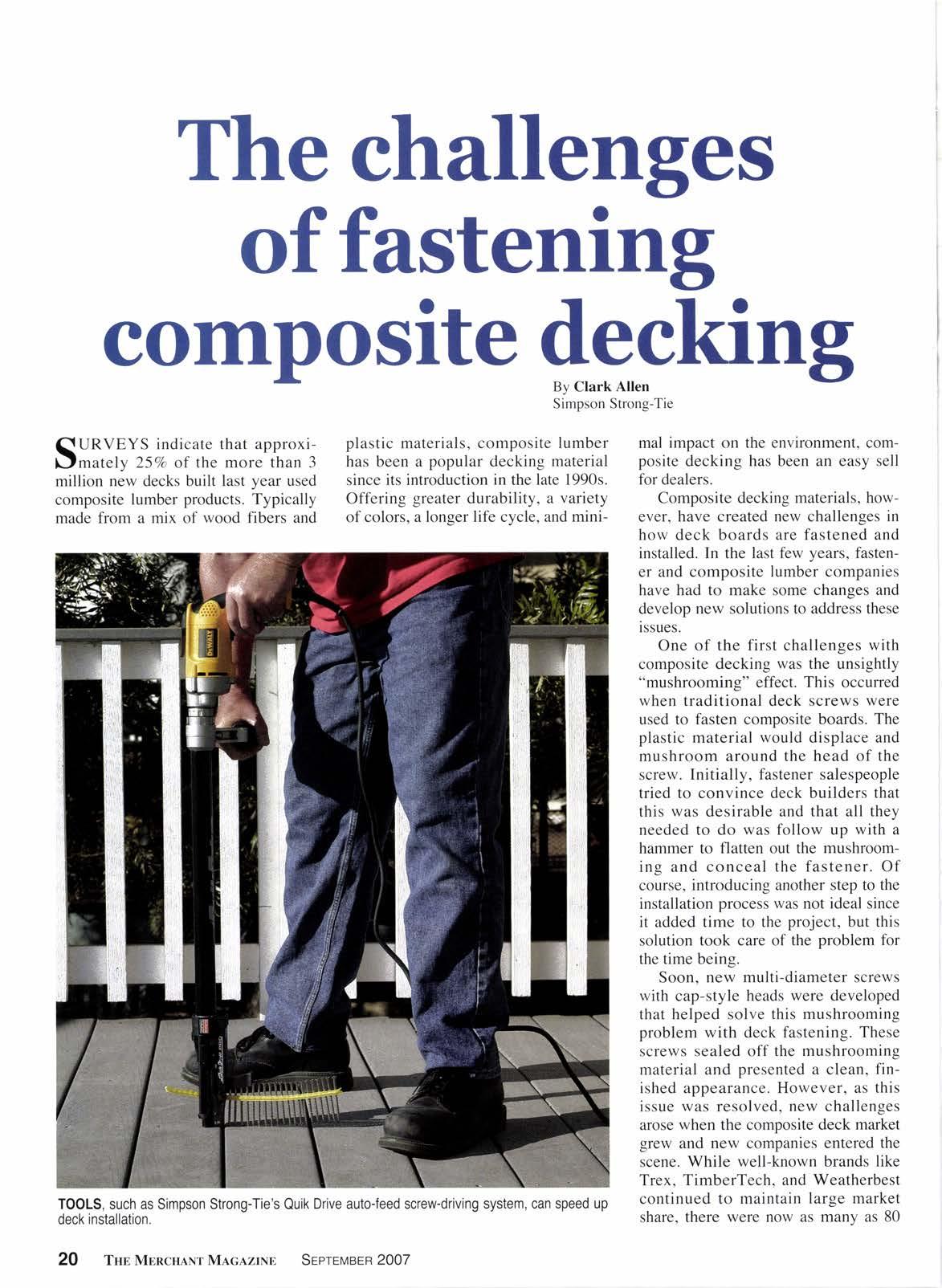
2 minute read
The challenges of fastening ite decking composl
By Clark Allen Simpson Strong-Tie
CIURVEYS indicate that approxiDmately 257o of the more than 3 million new decks built last year used composite lumber products. Typically made from a mix of wood fibers and plastic materials, composite lumber has been a popular decking material since its introduction in the late 1990s. Offering greater durability, a variety of colors, a longer life cycle, and mini- mal impact on the environment, composite decking has been an easy sell for dealers.
Composite decking materials, however, have created new challenges in how deck boards are fastened and installed. In the last few years, fastener and composite lumber companies have had to make some changes and develop new solutions to address these issues.
One of the first challenges with composite decking was the unsightly "mushrooming" effect. This occurred when traditional deck screws were used to fasten composite boards. The plastic material would displace and mushroom around the head of the screw. Initially, fastener salespeople tried to convince deck builders that this was desirable and that all they needed to do was follow up with a hammer to flatten out the mushrooming and conceal the fastener. Of course, introducing another step to the installation process was not ideal since it added time to the project, but this solution took care of the problem for the time being.
Soon, new multi-diameter screws with cap-style heads were developed that helped solve this mushrooming problem with deck fastening. These screws sealed off the mushrooming material and presented a clean, finished appearance. However, as this issue was resolved, new challenges arose when the composite deck market grew and new companies entered the scene. While well-known brands like Trex. TimberTech. and Weatherbest continued to maintain large market share, there were now as many as 80 different manufacturers offering composite deck board.
This vast array of new boards brought new formulations, which greatly varied in density and composition. In addition, as these products were used in more areas of the country, challenges related to weather arose. Screws with the cap-style head didn't perform as well with the denser composite boards, especially in cold weather, which caused the boards to be even harder. As the cap-style head sealed off the mushroom, the resistance provided by the composite material slowed the momentum of the screw and in some cases, caused it to spin out of the substrate. This meant the head of the screw was not driven flush on the deck boards, potentially leaving a loose connection. This issue was further compounded by soft, wet substrate. Deck builders often complained that the screws worked fine on Friday when it was dry, but after a wet weekend they spun out and wouldn't drive flush.
Deck board composition as well as temperature also affected the way composite lumber manufacturers communicated their product information. Because composites have a greater tendency to expand and contract with fluctuations in temperature, board spacing guidelines had to be revised and temperature recommendations added to installation instructions.
Even though there have been challenges to fastening composite lumber, manufacturers of deck screws have been quick to develop new, creative products to solve these issues. There are now screws on the market that are designed to perform in hard, cold or wet boards and prevent the common problem of spin out. There are also collated screw driving systems that increase the speed and efficiency of deck fastening.










